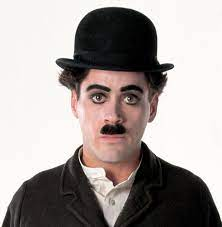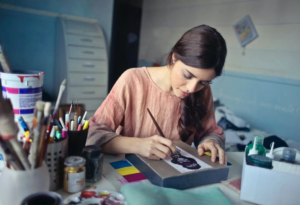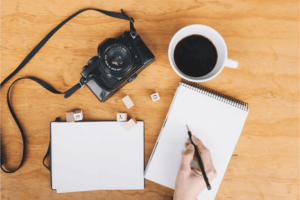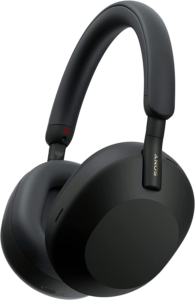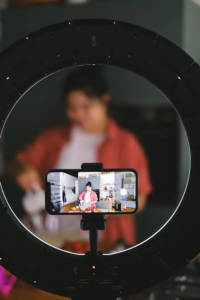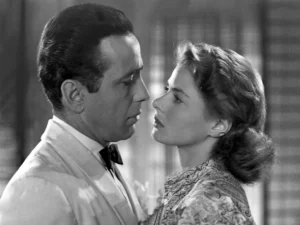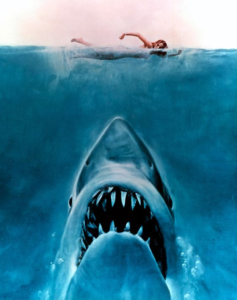The 35mm film camera, often called the “35mm camera,” is an iconic photographic device known for its versatility and historical significance. It uses standard 35mm film, a widely used film format for amateur and professional photography. These cameras are appreciated for their portability, ease of use, and the timeless quality of the images they produce. They played a pivotal role in the evolution of modern photography, making high-quality imaging accessible to a broader audience. Dive into the timeless art of photography with our exploration of 35mm film cameras.
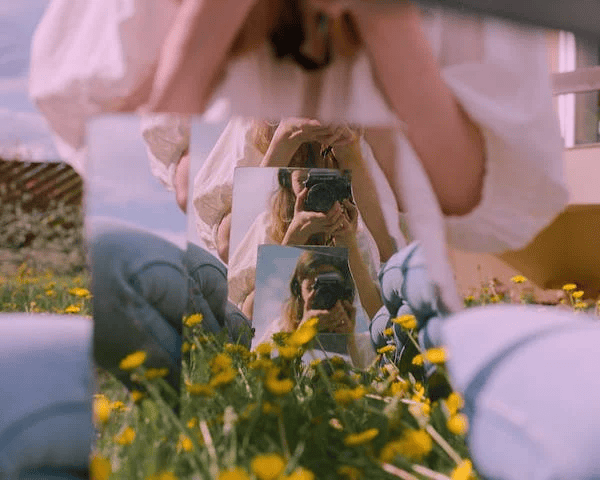
Who Found a 35mm Film Camera?
The invention of the 35mm film camera is credited to Oskar Barnack, a German engineer who worked for the camera manufacturer Ernst Leitz GmbH. In the early 20th century, around 1913, Barnack developed the first 35mm camera prototype, the “Ur-Leica” or “Original Leica.” This camera used 35mm cinema film, which was readily available and allowed for compact, portable photography. The success of the Leica camera revolutionized photography by making small-format, high-quality images accessible to photographers, leading to the popularization of 35mm film as a standard format in the industry.
What 35mm Film is Made of?
35mm, or 135 film, comprises several layers and components that capture and store photographic images. Here are the key components of a typical 35mm film roll:
Film Base
The film base is the bottom layer of the film. It is typically made of a transparent and flexible material, such as cellulose acetate or polyester. The film base provides structural support for the entire film and holds the other layers in place.
Emulsion Layer
The emulsion layer is where the photo-sensitive chemicals are applied. It consists of tiny light-sensitive silver halide crystals suspended in a gelatin solution. When exposed to light, these crystals undergo chemical changes, capturing the image information.
Antihalation Layer
Some 35mm films have an antihalation layer on the backside of the emulsion layer. This layer absorbs excess light that might pass through the emulsion and reflect, reducing the risk of halos or flares in the final image.
Rem-Jet Layer
In color films, there may be a Rem-Jet layer, a black, carbon-based layer designed to prevent light through the film base. It also serves to protect the emulsion from light contamination.
Perforations
Along both edges of the film, you’ll find perforations (often called sprocket holes) that engage with the film transport mechanism in the camera. These perforations ensure precise film advancement and frame spacing.
Protective Layer
The outermost layer of the film is a protective coating, which helps shield the emulsion from physical damage, moisture, and other environmental factors. Depending on the film type, it may also have a matte or glossy finish.
These layers work in concert to capture and store the photographic image during the exposure process. After exposure to the camera, the film is typically sent to a photo lab for processing, where chemicals are used to develop and fix the image, resulting in a negative or positive image on the film.
What film does a 35mm camera take?
A 35mm camera takes 35mm film, also known as 135 film. This film format is a standardized size for analog still photography and is widely used in amateur and professional cameras. 35mm film is readily available in various types, including color negative film, black and white film, and slide (positive) film. Photographers can choose the type of film that best suits their creative preferences and the specific requirements of their photography projects.
What is a 35mm lens?
A 35mm camera lens has a fixed focal length of 35mm. It is often used on 35mm film and digital cameras with full-frame sensors. A 35mm lens is considered a “standard” or “normal” focal length, providing a field of view similar to what the human eye sees in terms of perspective.
Key characteristics of a 35mm lens include:
Field of View
A 35mm lens typically offers a moderately wide field of view, making it versatile for various photography styles, including landscape, street, documentary, and general-purpose photography.
Aperture
35mm lenses with different maximum apertures (e.g., f/1.4, f/1.8, etc.) are available. Lenses with wider maximum apertures (e.g., f/1.4) allow for better low-light performance and greater control over depth of field.
Compact and Portable
Many 35mm lenses are compact and lightweight, making them suitable for travel and everyday use.
Sharpness
A well-designed 35mm lens can produce sharp and high-quality images with minimal distortion.
Versatility
Photographers often favor the 35mm focal length for its versatility in capturing a wide range of subjects and scenes.
35mm lenses are popular among photographers for their ability to capture scenes with a natural perspective and balance wide-angle and standard focal lengths. They are used for various photographic applications, making them a valuable addition to many photographers’ lens collections.
What Does 35mm Film Photography Mean?
35mm film photography refers to capturing photographs using a camera that uses 35mm film to record images. It encompasses photographing with a 35mm film camera and the film’s subsequent development and printing (or scanning) to produce physical prints or digital files.
Here are the key aspects of 35mm film photography:
Film Format
In 35mm film photography, the film is typically a 35 mm-wide strip of celluloid or plastic with perforations (sprocket holes) along its edges. This film format is a standardized size and has been widely used in analog photography for many decades.
Camera
A 35mm film camera exposes the film to light, creating a latent image on the film emulsion. These cameras can vary widely in terms of design, features, and complexity, but they all share the use of 35mm film as their medium.
Exposure
Photographing with a 35mm film camera involves adjusting settings such as aperture, shutter speed, and focus to achieve the desired exposure. The film is exposed to light when the camera’s shutter opens, capturing the image.
Development
The film must be processed through chemical baths to develop the latent image after exposure. This chemical development step converts the exposed silver halide crystals in the film emulsion into a visible image.
Printing or Scanning
Once developed, the film can create physical prints in a darkroom or be scanned to produce digital files. Printing involves using an enlarger and photo-sensitive paper while scanning digitizes the film images for further editing and sharing.
Final Images
The result of 35mm film photography is a collection of physical prints or digital image files that can be viewed, shared, or used for various purposes.
35mm film photography has a distinct aesthetic characterized by its grain structure, color rendering, and unique qualities. It offers a tactile and hands-on approach to photography, and many photographers and artists appreciate its nostalgic and artistic value. Despite the rise of digital photography, 35mm film photography continues to have a dedicated following and remains a vibrant and enduring medium in photography.
Can You Use 35mm Film in Any Film Camera?
Generally, 35mm film can be used in most 35mm film cameras. The film format is standardized, which means that the physical dimensions of the film, including the width and the spacing of the perforations (sprocket holes) along the edges, are consistent across different 35mm film cameras.
However, there are a few considerations to keep in mind:
Film Type
Different cameras are designed for specific types of 35mm film, such as color negative, black and white, or slide (positive) film. Ensure the film type matches the camera’s specifications and your creative intent.
Film Speed
Cameras limit the range of film speeds (ISO or ASA) they can accommodate. Ensure the film’s ISO rating matches or falls within the camera’s specified range for proper exposure.
Film Advance
Some older or specialty cameras may have unique film advance mechanisms or loading procedures. Familiarize yourself with your specific camera’s instructions for loading and advancing the film.
Frame Size
While most 35mm cameras create standard 35 mm-sized frames, some panoramic or half-frame cameras produce differently-sized frames on the same 35mm film.
Camera Condition
Ensure that your 35mm camera is in good working order, especially if it’s older. Check for any issues with the shutter, film transport, and light seals to avoid potential problems with your film.
In most cases, as long as you choose the appropriate film type film speed and load the film correctly according to your camera’s instructions, you should be able to use 35mm film in a 35mm film camera without any issues.
How to Use 35mm Cameras?
Using a 35mm camera involves several steps, from loading film to capturing photographs. Here’s a general guide on how to use a 35mm camera:
Choose Your Film Type
- Select the type of 35mm film you want to use, such as color negative, black and white, or slide film.
- Ensure the film’s ISO rating matches the camera’s ISO setting or falls within its specified range.
Load the Film
- Open the camera’s film compartment, typically located on the back or bottom of the camera.
- Follow the camera’s instructions for loading the film. Insert the film canister into the appropriate chamber, and ensure the film engages with the take-up spool.
- Close the film compartment securely.
Advance the Film
- Advance the film to the first frame by turning the advance lever or knob (usually located on the top or side of the camera) until it stops.
- Check the camera’s frame counter (if available) to confirm that the film is advancing correctly.
Set the Exposure Settings
- Adjust the camera’s exposure settings, including aperture, shutter speed, and focus, to achieve the desired exposure and creative effects.
- Use the camera’s built-in light meter (if available) or an external light meter to gauge the correct exposure settings.
Compose Your Shot
- Look through the camera’s viewfinder to frame your shot and focus on your subject.
- Pay attention to composition, framing, and any creative elements you want to include in your photograph.
Take the Photo
- Press the shutter button to take the photo. The camera’s shutter will open, exposing the film to light for the designated time.
- Listen for the sound of the shutter releasing, indicating that the exposure is complete.
Advance the Film (Again)
After taking a shot, advance the film to the next frame by turning the film advance lever or knob. Most cameras will also automatically reset the shutter and cock the film for the next exposure.
Repeat the Process
Continue capturing photographs by repeating steps 4 to 7 for each frame on the roll of film.
Rewind the Film
- When you’ve finished shooting the entire roll of film, rewind it into the film canister. Follow the camera’s instructions for rewinding.
- Open the film compartment and remove the exposed film canister for development.
Develop the Film
Take the exposed film to a photo lab or use a film development kit (if you’re experienced in film development) to process and create physical prints or digital scans of your photographs.
Enjoy Your Photos
Once the film is developed, you can enjoy your physical prints or digital scans, showcasing the unique character and aesthetic of 35mm film photography.
3 Characteristics of 35mm Film
35mm film, used in 35mm cameras, has several characteristic features that distinguish it from other film formats. Here are three key characteristics:
Standardized Format
One of the defining characteristics of 35mm film is its standardized format. The film strip is 35mm wide and has perforations (sprocket holes) along both edges that engage with the film transport mechanism in 35mm cameras. This standardization allows for compatibility between camera models and film brands, making it a widely recognized and used film format.
Frame Size
35mm film produces individual frames that are approximately 24mm by 36mm in size. This aspect ratio is 3:2, closely matching the proportions of 35mm film cameras’ viewfinders and the standard 4×6-inch print size. The frame size is considered ideal for a wide range of photographic compositions.
Versatile Film Types
35mm film is available in various types and emulsions, including color negative, black and white, and slide (positive) film. Each film type has unique characteristics, such as color rendering, contrast, and grain structure, allowing photographers to choose the film that best suits their creative vision for a particular project. This versatility has contributed to the enduring popularity of 35mm film photography.
What Are Some Advantages of Shooting with 35mm Film?
Shooting with 35mm film offers several advantages that continue to attract photographers and artists to analog photography:
Versatility
35mm film is available in various types, including color negative, black and white, and slide film, each with unique characteristics. This versatility allows photographers to choose the film that best suits their creative vision and project requirements.
Classic Aesthetic
35mm film photography often has a classic and timeless aesthetic, characterized by its grain structure, color rendering, and distinct square format with white borders. Many photographers appreciate the nostalgic and vintage look of film images.
Tactile Experience
Shooting with film provides a tactile and hands-on photographic experience. Loading film, manually advancing frames, and physically handling prints or negatives offer a different engagement level than digital photography.
Unique Characteristics
Film captures light in a way that creates unique and unpredictable results. Film photographers often embrace the imperfections, quirks, and surprises of shooting analog. These qualities can add character and charm to photographs.
Slower Pace
Film photography encourages a more deliberate and contemplative approach to photography. The limited number of exposures on a roll of film encourages photographers to compose and consider each shot carefully.
Learning and Skill Development
Shooting film can be a valuable learning experience for photographers, as it requires a deeper understanding of exposure, composition, and the technical aspects of photography. It encourages skill development and honing one’s craft.
Physical Prints
Film photography results in physical negatives or prints that can be held, displayed, and shared. Many photographers appreciate the tangible nature of physical photographs and the ability to create photo albums or artwork.
Challenges and Creativity
The limitations of film, such as finite exposures on a roll and the need for manual control, can inspire creativity and problem-solving. Photographers often find innovative ways to work within these constraints.
Longevity
When properly stored, film negatives and prints can have a long lifespan, preserving memories and artwork for generations.
Artistic Expression
Film photography offers a distinct medium for artistic expression. Many photographers and artists use film to create unique, evocative images that stand out in the digital age.
While digital photography offers advantages and conveniences, 35mm film photography continues to thrive as a creative and artistic medium appreciated for its unique qualities and the connection it fosters between photographers and their craft.
How to Process 35mm Film?
Processing 35mm film involves developing the exposed film to create physical negatives or positives that can be used to make prints or digital scans. Here’s a general overview of how to process 35mm film:
Note: Film processing requires the use of chemicals and darkroom equipment. If you’re new to film processing, consider taking a class or seeking guidance from an experienced photographer or a photography lab.
Materials Needed
- Exposed 35mm film
- Developing a tank with reels
- Chemicals (developer, stop bath, fixer)
- Thermometer
- Film-changing bag or darkroom
- Timer
- Measuring containers
- Film clips or clothespins
- Film drying rack or a clean, lint-free surface
Steps
Prepare a Darkroom or Use a Film-Changing Bag
Film processing should be done in complete darkness or a darkroom with safe lighting. Alternatively, you can use a film-changing bag, which allows you to work in darkness without a dedicated darkroom.
Load the Film onto Reels
Open the film canister inside the darkroom or changing bag and carefully load the exposed film onto the developing reels. Make sure the film is securely wound onto the reels to prevent tangling.
Prepare Chemicals
Mix the developer, stop bath, and fixer solutions according to the manufacturer’s instructions and recommended dilutions. Use a thermometer to ensure the chemicals are at the correct temperature.
Develop the Film
- In a darkroom or using a light proof film tank, pour the developer into the tank with the film reels. Agitate the tank according to the development time specified for your film and developer combination.
- Stop the development process by pouring in the stop bath. Agitate for the recommended time.
- Fix the film by adding the fixer to the tank. Agitate as required.
- Follow the development times and agitation recommendations specific to your film and developer.
Rinse and Wash
- After fixing, thoroughly rinse the film in running water or use a rinsing aid to remove residual chemicals.
- Wash the film for an appropriate duration, typically 5-10 minutes, to ensure all fixers are removed. Agitate the water during this step.
Final Rinse and Wetting Agent (Optional)
A final rinse with distilled water can help prevent water spots on the film. You can also use a wetting agent to aid in drying and reduce water marks.
Hang and Dry
Use film clips or clothespins to hang the film strips on a drying rack or a clean, lint-free surface in a dust-free environment. Allow the film to air dry completely.
Cut and Store
Once dry, cut the film into individual frames and store them in archival or negative sleeves. Label them for easy identification.
Film processing requires careful attention to detail, timing, and appropriate chemicals. It’s essential to follow the specific instructions the film and chemical manufacturers provide, as different films and developers may have varying processing requirements.
Why is it Called 35mm Film?
35mm film is named after its physical width, approximately 35 millimeters, or about 1.38 inches. The measurement refers to the width of the film strip itself, from edge to edge. This standardized width has been a defining characteristic of 35mm film and has remained consistent across different manufacturers and film types.
The use of millimeters as a unit of measurement is common in the world of film and photography, and it helps categorize and differentiate various film formats. The 35mm film format was introduced in the late 19th century and quickly became popular for still photography and motion pictures due to its compact size and versatility. Its name, “35mm,” simply reflects the dimensions of the film strip, making it easy for photographers and filmmakers to identify and work with this film format.
Is 35mm Still Made?
Yes, as of my last knowledge update in January 2022, 35mm film is still being manufactured and used in photography. While the popularity of digital photography has grown, there remains a dedicated community of film photographers, artists, and enthusiasts who appreciate the unique qualities and aesthetic of shooting with 35mm film.
Several well-known film manufacturers continue to produce a variety of 35mm film stocks, including color negative, black and white, and slide (positive) films. These films are available in different ISO speeds, formats, and emulsions, offering photographers a range of options to suit their creative needs.
Additionally, many independent film labs and stores worldwide provide film processing and printing services, supporting the ongoing use of 35mm film in contemporary photography. However, it’s advisable to check with local suppliers or online retailers for the most up-to-date information on the availability of specific film stocks, as the film industry can evolve.
Videos
A Beginner Guide for 35mm Film Photography.
How to Shoot on 35mm Film Cameras
Buying Your First 35mm Film Camera? WATCH THIS

